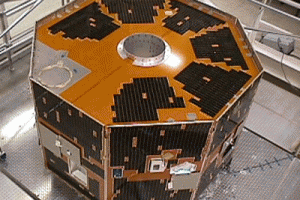NASA is set to retire the 20-year-old Cassini spacecraft on September 15th by ‘deliberately plunging’ it into Saturn. The spacecraft is nearly out of fuel, and NASA says causing it to burn up in the atmosphere will ensure that Saturn’s moons ‘will remain pristine for future exploration’.
The Cassini spacecraft was launched on October 15, 1997, and entered orbit around Saturn on June 30, 2004. The craft was a collaboration between NASA, the European Space Agency, and the Italian Space Agency carrying the Huygens probe which detached on December 25, 2004 and landed on Saturn’s moon, Titan.
During entry into Saturn’s orbit, the spacecraft is expected to send back science in real-time with new data that couldn’t have been achieved earlier, including:
- detailed maps of Saturn’s gravity and magnetic fields
- amount of material that makes up Saturn’s rings
- sampling ice particles in the rings
- and close-up images of Saturn’s rings and clouds
Cassini’s finale comes after two deadline extensions
Cassini’s main mission was complete in 2008 after orbiting Saturn for four years and dropping the Huygens probe to Titan’s surface. The spacecraft’s mission was extended twice thereafter, allowing additional data to be collected in the following years.
Some of Cassini’s discoveries include evidence of liquid methane seas on Titan and indications of hydrothermal activity within Enceladus, two of Saturn’s moons.
Cassini’s finale has been in the works since April 2017. The spacecraft since has been flying lower and lower into Saturn’s orbit and between it and its rings – an approximately 1,200-mile-wide gap – the first spacecraft to ever do so. The craft performed a final flyby of Titan on April 22.
Science until the very end
While Cassini dives into Saturn’s atmosphere for the final time, its transmitter will be facing Earth, returning as much science data as it can. NASA has configured Cassini to send back data from its mass spectrometer until the very end, allowing scientists to gain brand new data on the makeup of Saturn’s atmosphere. In addition, the spacecraft will be taking photos closer than ever before.




